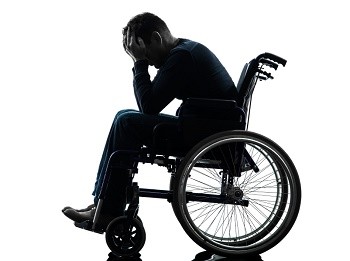Living with work-related paralysis presents not only physical challenges, but heavy financial burdens as well.
 Injuries resulting in paralysis is more common than you may think. According to statistics, 1 in 50 people are living with some form of paralysis. When the paralysis is because of a work-related injury, the injured employee not only has the physical impact to deal with, but their livelihood may now be threatened. Add to this that the average lifetime cost of living for someone with paralysis will be between $1,000,000 – $2,500,000.00. It is imperative for the injured employee to receive all their rightful benefits under the workers’ compensation system. A St. Louis workers’ compensation attorney may need to be consulted.
Injuries resulting in paralysis is more common than you may think. According to statistics, 1 in 50 people are living with some form of paralysis. When the paralysis is because of a work-related injury, the injured employee not only has the physical impact to deal with, but their livelihood may now be threatened. Add to this that the average lifetime cost of living for someone with paralysis will be between $1,000,000 – $2,500,000.00. It is imperative for the injured employee to receive all their rightful benefits under the workers’ compensation system. A St. Louis workers’ compensation attorney may need to be consulted.
Complete or Partial Work-Related Paralysis
Paralysis is the total or partial loss of function or sensation in any part of the body. Paralysis is normally associated with the loss of movement and may limit voluntary movement due to an injury or illness that affects the nerves, spinal cord, or brain. Paralysis may be complete or partial. Complete paralysis refers to a complete loss of motor function and sensation in a certain part of the body, while partial paralysis signifies certain limitations in movement or sensation. This means that the person can still move or feel that part of the body to a certain degree. Paralysis is categorized according to the affected part of the body.
- Monoplegia – paralysis is limited to one limb.
- Diplegia – paralysis affects one body part on the two sides of the body, such as paralysis on both legs.
- Hemiplegia – paralysis is limited to a single side of the body.
- Paraplegia – paralysis affecting the trunk and two legs.
- Quadriplegia – paralysis affecting the trunk and all four limbs.
Workers Who Are At the Greatest Risk
Work-related paralysis is the type of paralysis resulting from an injury at the workplace. There are workers may have a bigger risk of becoming paralyzed while performing their jobs. These workers include:
- Construction workers.
- Emergency personnel and firemen.
- Police and security personnel.
- Transportation and delivery personnel.
- Factory workers.
Medical Treatment for Work-Related Paralysis
Medical treatment for work-related paralysis is determined by the cause of the paralysis. Medical treatment may include:
- Occupational therapy.
- Physical therapy.
- Vocational therapy.
- Mobility aids, including braces, wheelchairs, and mobile scooters.
- Surgical procedure and removal of a limb.
The chances of recovery from a work-related paralysis are determined by seriousness of the injury. It also depends on the part of the brain or spinal cord affected by the injury. People may still recover the sensation and mobility in the paralyzed parts of the body.
Work-related paralysis may result in either partial or total disability. Sometimes an injured employee may need guidance in receiving the appropriate workers’ compensation benefits. If you have suffered a work-related injury resulting in paralysis, contact The Law Office of James M. Hoffmann at (314) 361-4300.
